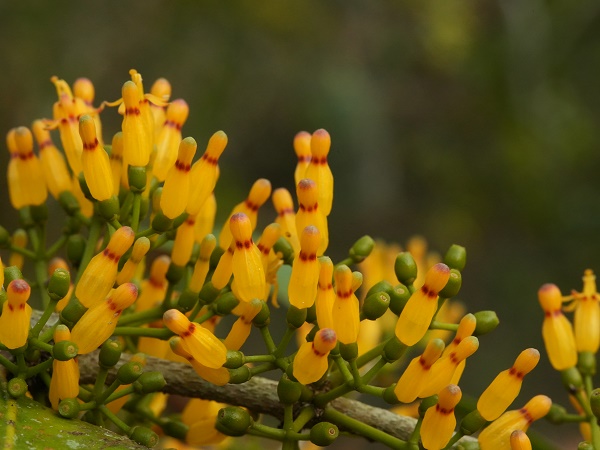Mistletoe is an important component of the ecosystem, which has a significant impact on ecosystem processes and their response to climate change. Mistletoes and their host plants are facing increasing drought challenges, making comparative studies of their hydraulic traits particularly important.
Researchers from Xishuangbanna Tropical Botanical Garden (XTBG) and their collaborators investigated the water transport characteristics of mistletoes and their host plants under different drought environments. They tried to discern the adaptive strategies of mistletoes and their hosts along a gradient of aridity index (proxy of diverse water and temperature conditions), focusing on xylem traits related to plant hydraulic functions.
The researchers presented the first comprehensive regional dataset, encompassing 12 xylem traits related to hydraulic efficiency, mechanical strength, and safety, in 119 mistletoe–host species pairs (340 individual pairs) across four ecologically distinct sites in Yunnan Province, China.
Related results were published in New Phytologist.
By comparing the xylem features of 119 pairs of mistletoe-host species in four environments with different aridity indices, it was found that mistletoes had lower water use efficiency and hydraulic efficiency (smaller vessel diameter and theoretical hydraulic conductivity), but higher safety (lower vulnerability index and higher vessel wall reinforcement, vessel clustering index, and wood density).
Specifically, mistletoes had smaller vessel diameters and lower theoretical conductivity, but they had a lower vulnerability index, higher vessel wall reinforcement coefficient, vessel group index, and wood density. The higher embolism resistance of mistletoes was consistent with their high xylem tension (low water potential), but contradicted their high transpiration and low water use efficiency.
The results indicated a trade-off between efficiency and safety in the water transport process of mistletoes. The trade-off between efficiency and safety reflected the unique adaptation strategy of mistletoes. Xylem traits of mistletoes were significantly affected by host water supply efficiency and environmental changes, suggesting that mistletoes may achieve high transpiration by maintaining a high stomatal conductance at low water potential.
“Our study reveals the unique hydraulic adaptation strategies adopted by mistletoe due to its parasitic lifestyle. It provides a new perspective for a deeper understanding of the hydraulic adaptation mechanisms of parasitic plants,” said ZHANG Jiaolin, one of the corresponding authors.
The work was supported by the National Natural Science Foundation of China and the Yunnan Fundamental Research Projects.

A kind of mistletoe plants. (Image by MO Haibo)
Contact
ZHANG Jiaolin Ph.D Principal Investigator
Ph.D Principal Investigator
Key Laboratory of Tropical Forest Ecology, Xishuangbanna Tropical Botanical Garden, Chinese Academy of Sciences, Mengla, Yunnan 666303, China
E-mail: zhangjiaolin@xtbg.ac.cn
Published: 13 November 2024

